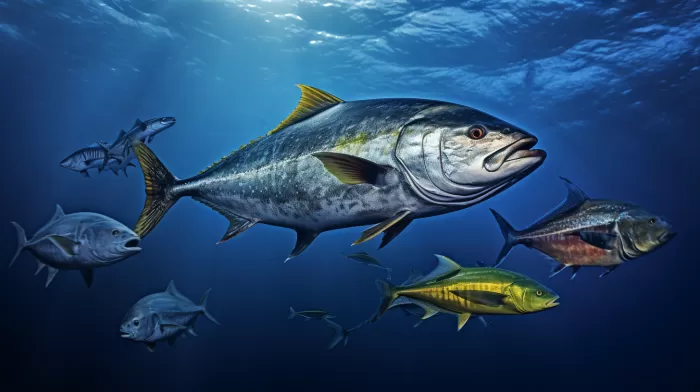Fish are all the buzz these days due to their numerous health benefits, but can we ignore the fact that many of them are contaminated with mercury, a toxic heavy metal? This article shines light on where the mercury in fish comes from and what steps need to be taken to reduce health risks.
Mercury contamination in Pacific fish is a complex issue that has puzzled scientists for years. We all want to enjoy the nutrients and health benefits of fish, but how can we ensure they are safe for consumption? Let’s unravel this mystery.
The Mercury’s Exotic Travel Route
University of Michigan researchers have discovered that the mercury found in Pacific fish near Hawaii likely travels through the air for thousands of miles before being deposited on the ocean surface in rainfall. The source? Japan and China have increasingly relied on coal-burning power plants, a significant contributor to mercury pollution.
This means that reducing mercury concentrations in open-ocean fish involves reducing global emissions of mercury. Unfortunately, cleaning up shoreline sources isn’t enough. How can we tackle this worldwide atmospheric issue?
Regulating Mercury Emissions
In December 2011, the Environmental Protection Agency (EPA) implemented new standards that drastically limited future emissions of mercury and other toxic pollutants from coal- and oil-burning power plants in the United States. Additionally, the United Nations Environment Program has negotiated the Minamata Convention on Mercury, an international treaty aimed at curbing future mercury emissions. However, it’s unclear whether these measures will bring a substantial change in mercury emission levels.
From Air to Sea to Fish
The study conducted by the University of Michigan confirmed suspicions held by many scientists. The results showed a significant correlation between long-range transport of mercury deposited on the ocean surface and subsequent mercury levels in fish. The species of fish used in the study included flying fish, mahi-mahi, yellowfin tuna, skipjack tuna, moonfish (opah), bigeye tuna, swordfish, and two species of lantern fish.
These findings raise the critical question of the impact that mercury has on marine ecosystems and humans who consume contaminated fish. We need to understand the potential consequences on our health and ways to reduce contamination in fish.
Mercury and Your Health
Mercury is a dangerous neurotoxin that can cause severe health problems. Exposure to high levels of mercury can lead to permanent damage to the nervous system, kidneys, and developing fetuses. We should be cautious about mercury contamination in fish and understand how this heavy metal impacts our bodies.
It’s also important to note that not all fish are created equal. Some fish are more mercury-resistant – meaning they don’t accumulate as much mercury in their tissue – than others. High mercury concentrations are typically found in predatory fish at the top of the food chain due to a process called biomagnification. Examples of fish high in mercury include swordfish, shark, king mackerel, and tilefish.
On the other hand, low-mercury fish include salmon, shrimp, canned light tuna, pollock, and catfish. By making informed decisions about the fish you consume, you’ll be able to enjoy the many health benefits they provide while mitigating the risks posed by mercury contamination.
What Can Be Done?
Efforts to reduce mercury emissions and contamination in fish are ongoing, and consumers can do their part by raising awareness and advocating for stricter regulations. Here are some steps you can take:
- Educate yourself about the types of fish that are low in mercury and make informed choices while shopping and dining out. For guidance, the EPA and the FDA offer helpful information about mercury levels in common fish species.
- Share your knowledge with others. Encourage family members and friends to consume fish high in nutrients but low in mercury.
- Support environmental campaigns that promote clean energy alternatives to coal-burning power plants. Mercury pollution isn’t just an ocean or human health issue, but also a global atmospheric concern.
By understanding where mercury contamination in fish comes from, its potential impact on human health, and the practical steps we can take to address this issue, we can still enjoy the nutritious benefits of fish, while protecting our health and the environment.



